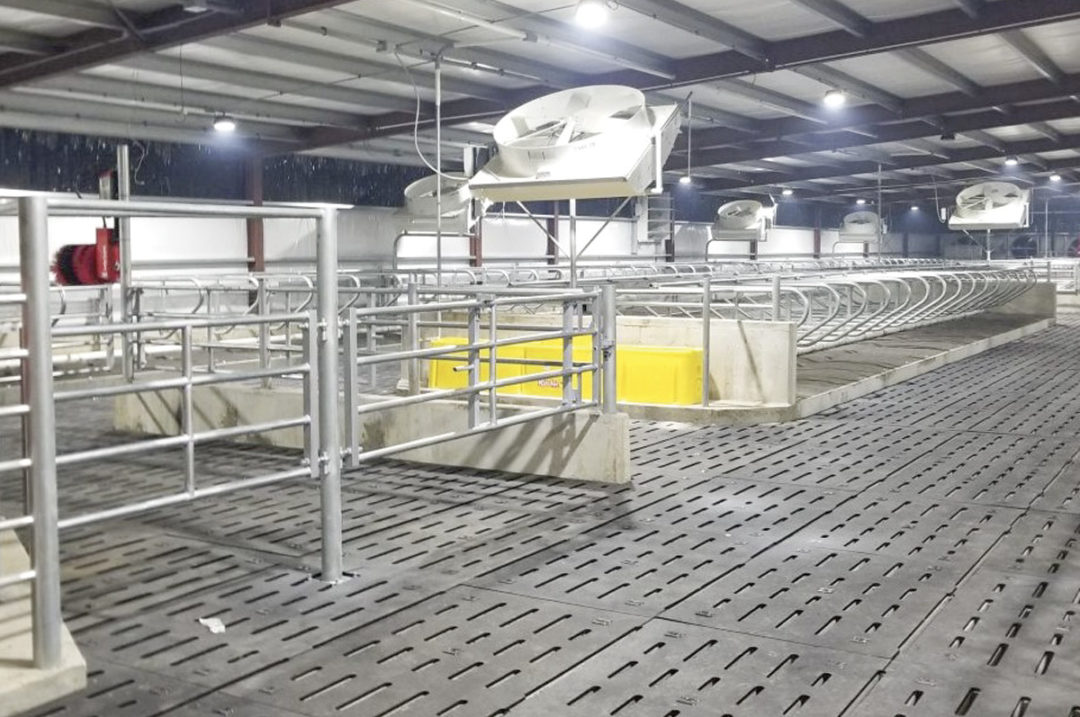Digging the first shovel of dirt is a rite of passage for farmers – a mark of progress, action and the exciting beginning of a long-awaited project coming to fruition. But before the digging begins, farm owners and managers have a detailed, essential and oftentimes overlooked list of tasks to complete to ensure those projects are properly funded, permitted and constructed.
Step 1: Assemble a circle of trust
As they say, “It takes a village,” and that holds true for constructing farm projects of any size. Assembling a circle of trust means pulling in advisers at the very start of project planning – even at the project dreaming stage – to make sure you are covering all your bases and approaching the project in the most sensible way.
The composition of this group of advisers can vary depending on the type of the project at hand but might include agricultural engineers, agronomists, nutritionists, ag business consultants, educators and bankers.
The role of this group is to provide information about rules, regulations, best practices, design standards, permitting agency compliance, cost-share funding and schedule, operation and maintenance, payment plans and more – and to offer trustworthy, objective insights to aid in making decisions about project design, location and construction methods.
Ideally, these are people you feel comfortable calling up and asking for an honest opinion – time and time again. It is their job to help you succeed and their fees are a worthwhile investment, generally at a fraction of the overall project cost.
Step 2: Conduct a project kick-off meeting
Once you have identified a group of trusted advisers, the next step is to hold an on-site project kick-off meeting. The invitees for this event should include the professionals identified in Step 1 as well as any local/county stakeholders or representatives from local/regional regulatory agencies such as the Natural Resource Conservation Service (NRCS), the Department of Natural Resources (DNR) or Department of Environmental Quality (DEQ) – depending on the state – or municipal planning and zoning departments.
This meeting is the opportunity to lay out project expectations, needs and wants, and to hash out what it will take to get you there – or, in some cases, how you may need to make realistic adjustments to the project scope, schedule or budget. This stage can be both exciting and humbling. It is a time to be flexible and open-minded, trusting that the individuals you have assembled to assist have your best interests in mind.
The project kick-off meeting is also the proper time to discuss potential permitting, zoning, property amendments or real estate acquisitions. It is not uncommon for local planning and zoning representatives to be involved in farm projects, particularly if those projects span multiple parcels of land or will be used for “industrial” applications. Say, for example, a farm is interested in constructing a new manure lagoon that will require utilizing two parcels of land. It is in the farmer’s best interest to have planning and zoning remove a parcel boundary so that the new lagoon is positioned on one plot only. This not only simplifies parcel management but also potential future resale options. Maybe the farmer with the lagoon project needs to acquire more land to bring it to fruition, whether through purchase or lease. Real estate negotiations take time; getting started earlier is better.
With regards to “industrial” applications, a prime example is the installation of an on-farm digester system. This system may be categorized as an industrial use, which means that different rules and regulations might apply. Again, your DNR or DEQ and planning and zoning departments may need to be intricately involved in this case and may warrant a rezoning or the need to grant for conditional use.
There are many different types of projects and project components that require time for processing and approval. The sooner the discussions begin, the better everyone will understand the required steps and timelines and the more likely the project will stay on track.
Step 3: Investigate the property, soils and operations
This stage involves a hands-on assessment of the property to define project extents, limitations and opportunities. Conducting a topographic survey is common practice, but a boundary survey may also be needed. A soils investigation is also important; this can be performed by an environmental consultant, engineer, geotechnical professional or even county or NRCS personnel at the direction of your trusted advisers and the designers of the systems.
Step 3 should also include a thorough and discerning review of current and future farm operations. If a dairy is interested in constructing a new freestall barn, for example, how will the operations within that space function? Where should equipment be laid out, and do all those new components integrate with existing infrastructure?
This assessment should also consider connection points such as manure transfer systems, feed management systems, necessary utility networks, proper stormwater containment/discharge measures and how the location and layout of the new facility will affect staff workflow and maintenance.
This stage is also the prime opportunity to consider design alternatives or ways to optimize what is being proposed. Maybe a farmer has been interested in adopting a robotic milking system; now would be the time to consider that option and integrate it into preliminary design. And that is precisely what you’ll have at the end of Step 3 – a site plan and design from which to move steadily forward.
Step 4: Submit applications for permits
With a site plan and design in hand, farmers can begin applying for the requisite project permits and pursuing permit approvals. Timelines for the different types of permits vary. Most commonplace permits such as storm water, erosion control, animal waste storage or DNR permits take, on average, 14 to 45 days to process. If a farm is a CAFO operation, those projects have a standard 90-day review period in most states. Permits for boundary parcel changes (including conditional use and re-zoning) and negotiations for real estate take at least four to six months. And those wishing to start the process of becoming a CAFO should plan at least one to two years in advance. Large farm expansion projects have a very similar planning time because of the degree of complexity and assortment of permits required.
Step 5: Hold a pre-construction meeting with the general contractor
Hiring a general contractor is an exciting step in the process, and it is important to have candid conversations about expectations, funding and payments, and the expected level of communication. That said, a general contractor can also be the farm owner, or in some cases, the project engineer.
Determining who will serve as the general contractor is important because that person is at the helm of the communication chain and decides how work progresses, on what schedule and what decisions need to be made. This is where a pre-construction meeting is essential. Generally, the role of the general contractor is to oversee, organize and schedule the construction of the project, particularly with any subcontractors.
The general contractor is also responsible for consistent communication with the owner/farmer about any issues or concerns that arise and making sure what is built is compliant with permits and the farmer’s expectations.
Step 6: Communicate throughout the construction process
It is important to be vocal and clear about how often you would like the general contractor to be on-site, how often you’d like a status report, your preferred means of communicating, schedule of payment and anything else that might arise. There are also several types of construction project delivery, so determining the best project delivery method is a discussion of great value before the first shovel of dirt is moved.
In addition, most projects have a variety of crews working on elements inside the larger overarching project. These individual sub-projects and subcontractors have their own needs regarding staging supplies and equipment, schedules and constructability timelines. This is where the general contractor is immensely helpful. They can help direct all the “moving parts” to work together, coordinate schedules and construct key connection points between the individual project components in the most efficient, cost-effective way.
Space is also a consideration during construction. Many times, farms do not have ample space to stage, maneuver or transport all the materials needed for a project. A good general contractor can coordinate material deliveries, organize staging or find other places on the property on which to store project supplies. Open and honest discussions about these and a variety of project factors will help avoid conflicts, unnecessary delays and potential budget overruns.
Project success
As with just about any project in life, planning really does pay off. Not all farm projects are the same, and in fact really do vary greatly in scope, size and expense. Following these six steps (even in an abbreviated format) will help you mentally, financially and emotionally prepare for that exciting project that lies ahead. Most importantly, you will establish a network of individuals who will become your go-to foundation of trust and will have a repeatable and reliable guide to use for whatever projects await down the road.








